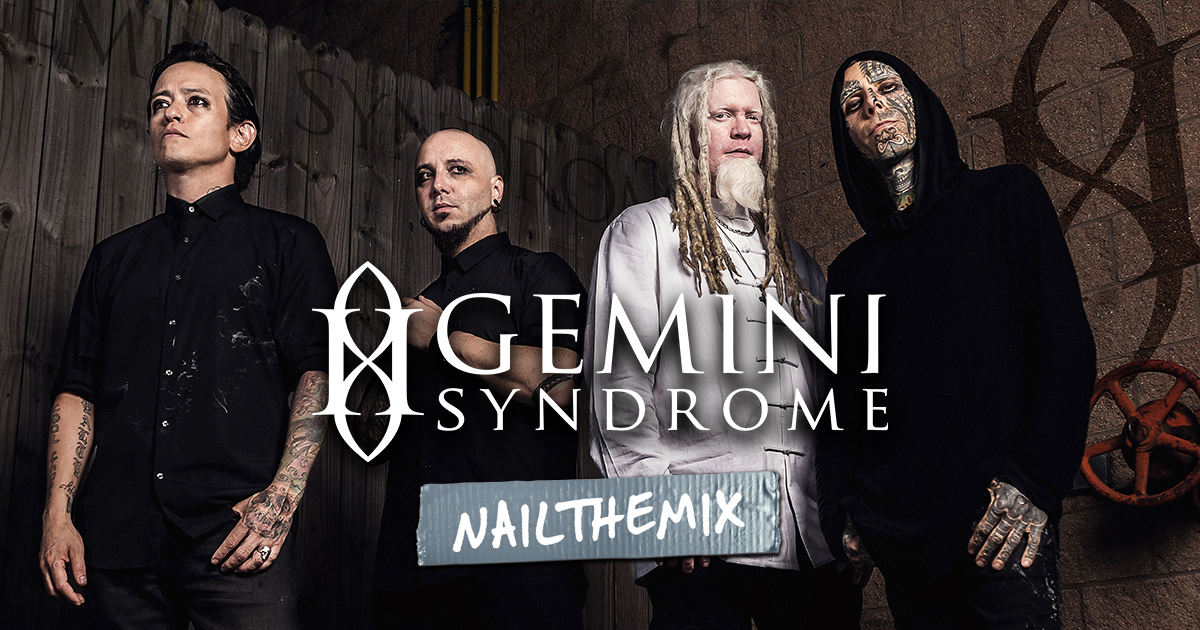
Deconstructing Karnivool’s “Deadman”: Forrester Savell’s Unique Room Mics & Layers
Nail The Mix Staff
Let’s be real: Karnivool’s “Deadman” isn’t just a song, it’s a journey. At over ten minutes long, with shifting time signatures and dynamic moods, it’s a progressive metal masterpiece. And the production, courtesy of the legendary Forrester Savell, is just as epic. It’s one of those tracks that sounds massive, organic, and incredibly detailed all at once.
We got our hands on the raw multitracks, and what we found was a masterclass in creating space and dimension. Forget sterile, grid-locked productions. This is all about capturing the energy of a live band and then enhancing it with some killer studio techniques. Let’s break down how Savell built this colossal sound.
The Foundation: Capturing a Live Band in a Room
One of the coolest things about this session is that the drums and bass were tracked live. In an era of isolated recording and sample replacement, this is a bold move that pays off massively. You can hear the natural groove and tight pocket between the rhythm section because they were literally in the same room, vibing off each other.
This approach gives you something you can’t easily fake: genuine bleed. The bass amp mic has drums in it, and the drum overheads have bass in them. This isn’t a problem to be fixed; it’s a feature.
Working With Bleed for a Cohesive Rhythm Section
Instead of aggressively gating every trace of bleed, the key is to embrace it. That shared ambience helps glue the bass and drums together, making them sound like a single, powerful unit.
When mixing, you can use this to your advantage. Try flipping the phase on the bass DI to see how it interacts with the bleed in the drum mics. A little phase alignment can tighten up the low-end punch significantly without erasing the live feel. The goal is to make the parts coherent, not sterile. And let’s talk about those raw drums—they’re absolutely huge, with incredible-sounding toms (including a sweet Roto Tom) and a phenomenal natural room sound. To make that room sound even bigger, you can use some heavy compression on the room mics to bring up the decay and make the space feel explosive.
Dimensional Guitars: Forrester Savell’s Room Mic Technique
Karnivool’s guitar tones are a huge part of their sound, and the “Deadman” session reveals a non-standard approach that is pure genius. Sure, you have your close-miced amp tones—we see tracks for an AC30 and another labeled “Lewis Amp”—but there’s another crucial layer.
More Than Just Close Mics
Forrester Savell often records a dedicated room mic for his guitar tracks. You’ll see close mic tracks for a guitar part, and then a separate mono or stereo room track to go with it. This isn’t just world-building with a reverb plugin; it’s capturing the actual sound of the amp energizing a physical space.
Why Add a Room Mic to Guitars?
Savell’s philosophy is that this technique adds a unique sound and three-dimensional quality that you simply can’t replicate with digital effects. It gives the guitars a sense of place and stops them from sounding like they’re just pasted on top of the mix.
Here’s how you can use this idea in your own productions:
- Blend to Taste: Start with your close mic tone dialed in, then slowly bring up the room mic track underneath it. Even a little bit can add significant depth and size.
- Create Width: Pan your close-miced guitar slightly to one side and the corresponding room mic to the other. This can create a wider, more immersive guitar sound without resorting to stereo-widening plugins.
- Shape the Space: Don’t be afraid to process the room mic differently. Use some aggressive EQ to filter out muddy lows or harsh highs, leaving just the ambient midrange character. Compressing the room mic can bring out the room’s decay and add sustain.
Layering Vocals for Intimacy and Power
The vocals in “Deadman” are just as dynamic as the instruments, shifting from delicate, intimate lines to soaring harmonies and powerful gang chants. The way these are recorded and arranged is a lesson in vocal production.
The “Less is More” Approach to Doubles
In many modern metal mixes, every lead vocal is doubled or even tripled by default. Here, many of the main vocal lines are a single, confident performance. This makes the vocal feel more personal and direct.
Then, when the harmonies and doubles do come in, the impact is huge. The contrast between a single, intimate vocal in a verse and a wide, layered stack of harmonies in the chorus is what gives the arrangement its dramatic lift. It’s a powerful tool for guiding the listener through the song’s emotional arc.
Creating Ambiance on Harmonies
Listen to the harmony stacks and group vocals (like the “Man Choir” tracks!) and you’ll hear that familiar sense of space again. It sounds like they were either re-amped through the studio’s live room or treated with a reverb that matches the sonic footprint of the drums and guitars.
This ties the whole production together. By placing the vocals in the same “space” as the instruments, you create a cohesive sonic world where every element belongs.
Bringing It All Together
Mixing a track like Karnivool’s “Deadman” is about more than just levels and panning. It’s about an overarching philosophy:
- Embrace the Live Feel: Use bleed and the natural pocket of a live performance as a strength.
- Create Real Dimension: Use room mics on more than just drums to give guitars and other elements a physical space in the mix.
- Use Dynamics & Contrast: Arrange vocal layers to create emotional impact, contrasting single-tracked intimacy with wide, layered power.
Karnivool on Nail The Mix
Forrester Savell mixes "Deadman"
Get the Session
These techniques are powerful concepts you can apply to your own mixes right now. But seeing how a pro like Forrester Savell actually blends these raw room mics, automates the dynamics over a 10-minute epic, and makes every one of these intricate layers sit perfectly is a whole other level of education.
At Nail The Mix, we give you the chance to do exactly that. You can get your hands on the full multitracks for “Deadman” and watch Forrester Savell mix the entire song from scratch, explaining every single move. It’s your chance to go way beyond presets and generic tutorials. Stop guessing and start learning the techniques the pros actually use to create legendary records.
Ready to see how it’s done? Check out the Karnivool session on Nail The Mix now.
Get a new set of multi-tracks every month from a world-class artist, a livestream with the producer who mixed it, 100+ tutorials, our exclusive plugins and more
Get Started for $1






